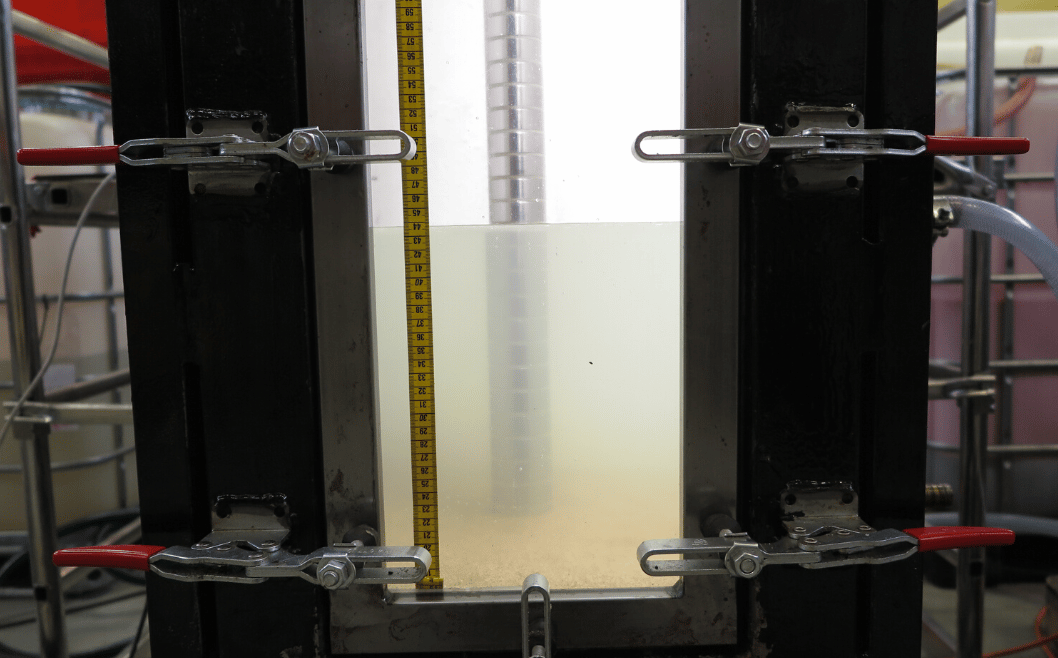
Interaction with Solids and Surface Tension
By: Prof. Johan Sjöblom
In general, the interaction with solids depends on how the solid is distributed in the system. Larger particles are sedimented to form a sediment and a separate phase. It is mainly the smaller particles that accumulate at the water/oil interface and influences the surface, interfacial tension of the droplets. A first explanation to this is in the particle size and its Brownian motion in the continuous phase which will govern the collision frequency between droplets and particles. Through this a mixed interface will form and the interfacial composition will change together with the tension.
Nature of Solids and Factors Influencing Its Formation
The sediment in the production unit can vary very much in structure and properties. The production conditions will clearly influence the nature of the solid sediment that is detected. The background for this is how voluminous and dense the solid phase is. The determining factors are depending on the attraction and repulsion between the solid particles. These forces determine the interparticulate distance and hence the nature of the sediment. There exists a uniform theory for the interparticulate forces in suspensions, i.e the DLVO theory named after the four scientists active in developing the concept. The theory summarizes the balance between attraction and repulsion for the stability of colloidal systems and hence of solid suspensions.
The determining factors are depending on the attraction and repulsion between the solid particles.
The attraction between solid particles is mainly determined by van der Waals forces which have its origin in the material for the solids (Hamaker constant). In a system dominating by attractive forces the distance between the particles will be small and the interaction strong. The influence of the sediment will be a more compact structure and a dense sediment. The sedimentation will influence the system in the same direction if the particles are large enough and uniform in size. However, if the attraction leads to a strong flocculation of the particles the packing is no longer so effective due to the packing of the flocs and the sediment structure is looser.
The repulsion between the particles is mainly a result of strong electrostatic forces. The background here is the surface charge density (number of charges per area) and their valency. If the repulsion is strong, the particles will stay apart from each other and the corresponding sediment less tight.
In addition to features predicted by the DLVO theory the operational conditions are highly important, i.e mainly the level of turbulence and the salinity. Turbulence will counteract the flocculation of the particles and hence smaller units will cause sediment. The electrolyte level is very important in adjusting the strength of the electrostatic repulsion. A high electrolyte level will promote closer distance between particles by neutralising the repulsive force. Decisive here is not only the concentration of electrolyte but also the kind of ions being present and their valency. For instance, a high amount of di- and trivalent ions like Ca, Ba and Fe is especially efficient in counteracting electrostatic effects.
How solids act?
In a situation with solids suspended in a tank/separator, the main force acting on the suspended particles is gravity. The well-known Stokes law expresses the relation between the different factors acting on the solid particles. Important parameters are gravity, particle size, density difference and viscosity. The Stokes equation gives a first approximation to the dependence between these variables. Nevertheless, it should be noted that: the simplicity expressed by Stokes does not take into account the polydispersity of the particles, the concentration of the particles (and the hindered sedimentation) and the particle-particle interaction which depends on the particle material (van der Waals) and the surface conditions, mainly the amount of surface charges. Hence, estimations of sedimentation rates based on Stokes equation will not give a good agreement between estimated values and experimentally obtained ones.

To sum up, the nature of a sediment is highly reflecting not only the nature of the particles but to a high extent production conditions. This creates challenges for experimental measurements of solids. Rocsole SoliDetect has shown its advanced capability in sensing solids and providing the height of accumulated solids in the separator or other operation vessels. Rocsole SoliDetect performance is backed up by Electrical Tomography technology which gives more insights and real-time data of your operations. Remove solids from your operations to protect your assets, to eliminate unwanted shutdowns due to blockages, to optimise your overall production and help reduce carbonization.




